Once a leather item is in use, microscopic cracks and splits occur in the leather. These cracks provide an entry site for water, dirt, grime, grease and salt from sweat, which work their way into the leather.
This weakens and damages the collagen and protein fibres in the Corium eventually causing irreparable cracks and splits. This together with heat, can cause drying, cracking and hardening. However with regular care and maintenance, this can be avoided.
Learn More About Leather HERE
If leather is properly maintained it can remain functional, supple and in good condition for many years and importantly retain its value.
The type of finish used dictates how the saddle or bridle should be cared for. For example, aniline leather is easily stained and so you should be aware that conditioners containing dyes or oils may permanently darken the appearance of the leather. On the other hand pigmented items tend not to be as absorbent to conditioners, particularly when new, so use a conditioner sparingly but often.
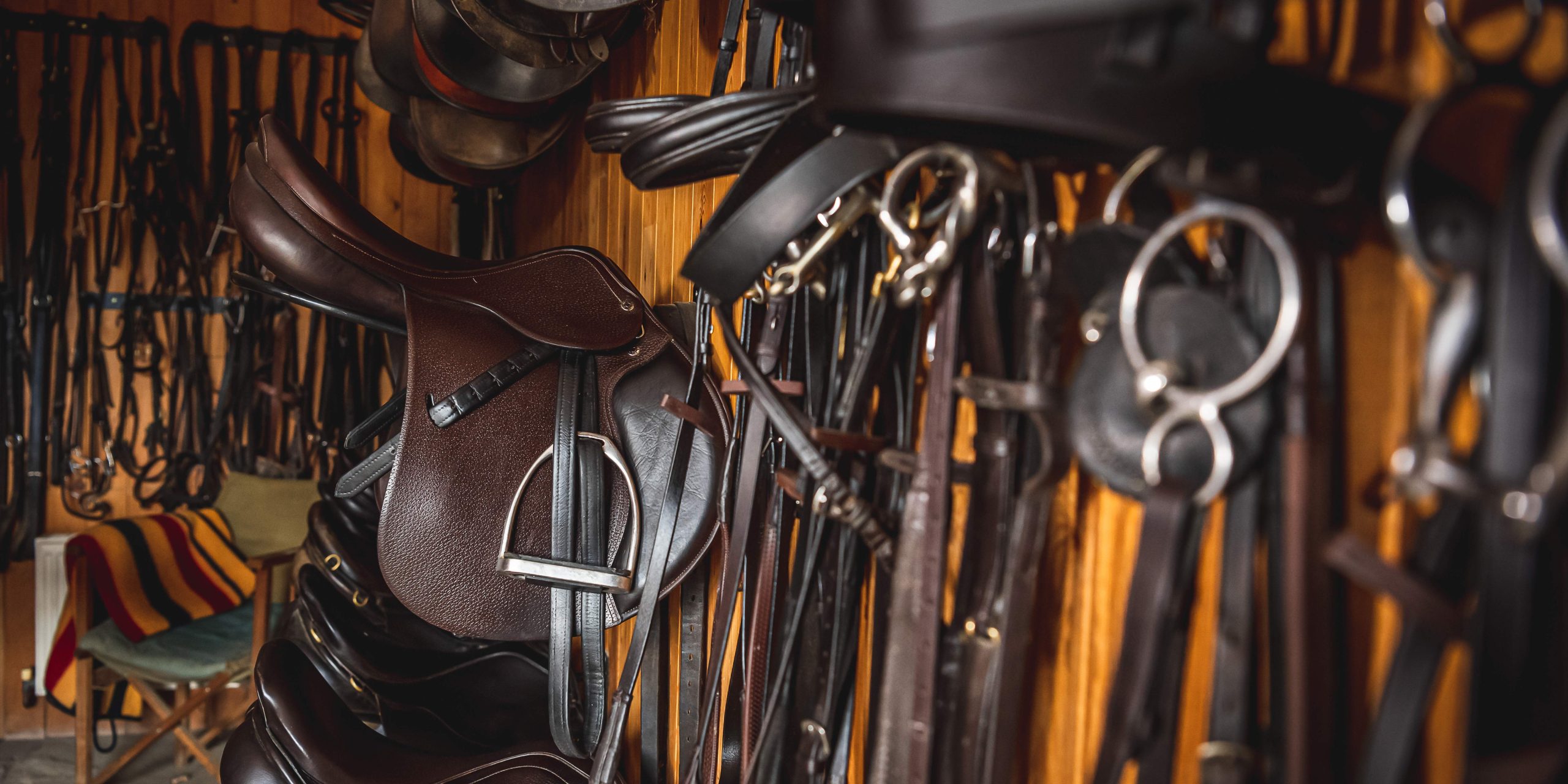
Daily Maintenance Clean
MAKE SURE IT’S CLEAN FIRST
Ideally, all saddlery items should be wiped after use to remove the damaging salts found in sweat and grease and be thoroughly cleaned at least every five times it is used.
To ensure thorough cleaning, where appropriate, tack should be taken apart and each piece then cleaned individually.
Just as you would shampoo your own hair first, it is also essential to clean leather before applying a conditioner. This ensures that the surface of the leather is free from grease and dirt and therefore porous to accept a conditioner.
Belvoir Tack Cleaner is specifically designed to remove grease and dirt quickly and easily, without “over-wetting” the leather or damaging the stitching. Too much liquid may cause swelling of the collagen fibres, which ultimately stretches and weakens the leather.
Quick drying Belvoir Tack Cleaner is pH neutral to ensure that the leather structure is not weakened.
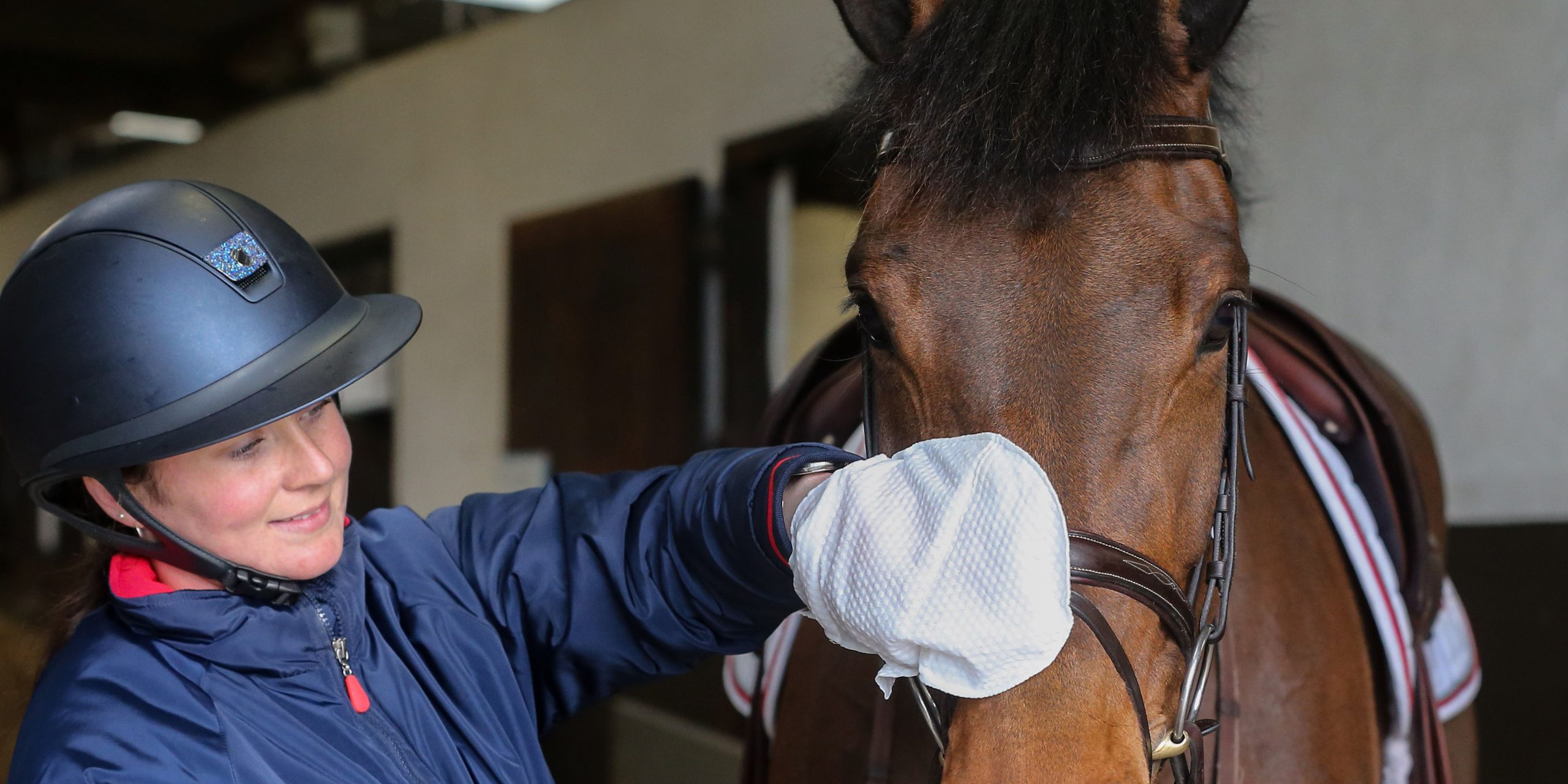

Traditionally, Saddle Soap has been used to clean and condition leather. This should be avoided as it does not effectively remove grease and dirt and could actually seal them in leaving a greasy residue.
For muddy leather, carefully remove the mud before cleaning, taking care not to scratch the surface of the leather.
Remember to always use a saddle cloth as this will absorb sweat and grease and protect your saddle.
Cleaning leather is a good opportunity to carry out safety checks; look out for wear and tear to billets, buckles, straps and stitching. Any repairs required should be carried out immediately to avoid further damage and unnecessary cost, and of course to ensure your safety.
Then condition…
YOU HAVE THREE CONDITIONING OPTIONS …
Once the leather has been thoroughly cleaned and allowed to dry, it may look slightly lighter in colour and parched. It should now be treated with a conditioner to moisturise protect and keep it supple.
Option-A
Belvoir Tack Conditioner SPRAY is a glycerine based soap which will leave a shiny, protective finish on the leather. This coating nourishes as well as filling and sealing pores. This helps by forming a barrier against salt, dirt, grease and water, protecting the integrity of the leather. If using on new leather, take care not to over-apply as this may result in a tacky film forming on the surface.
Belvoir Tack Conditioner is available as spray or the traditional solid bar.
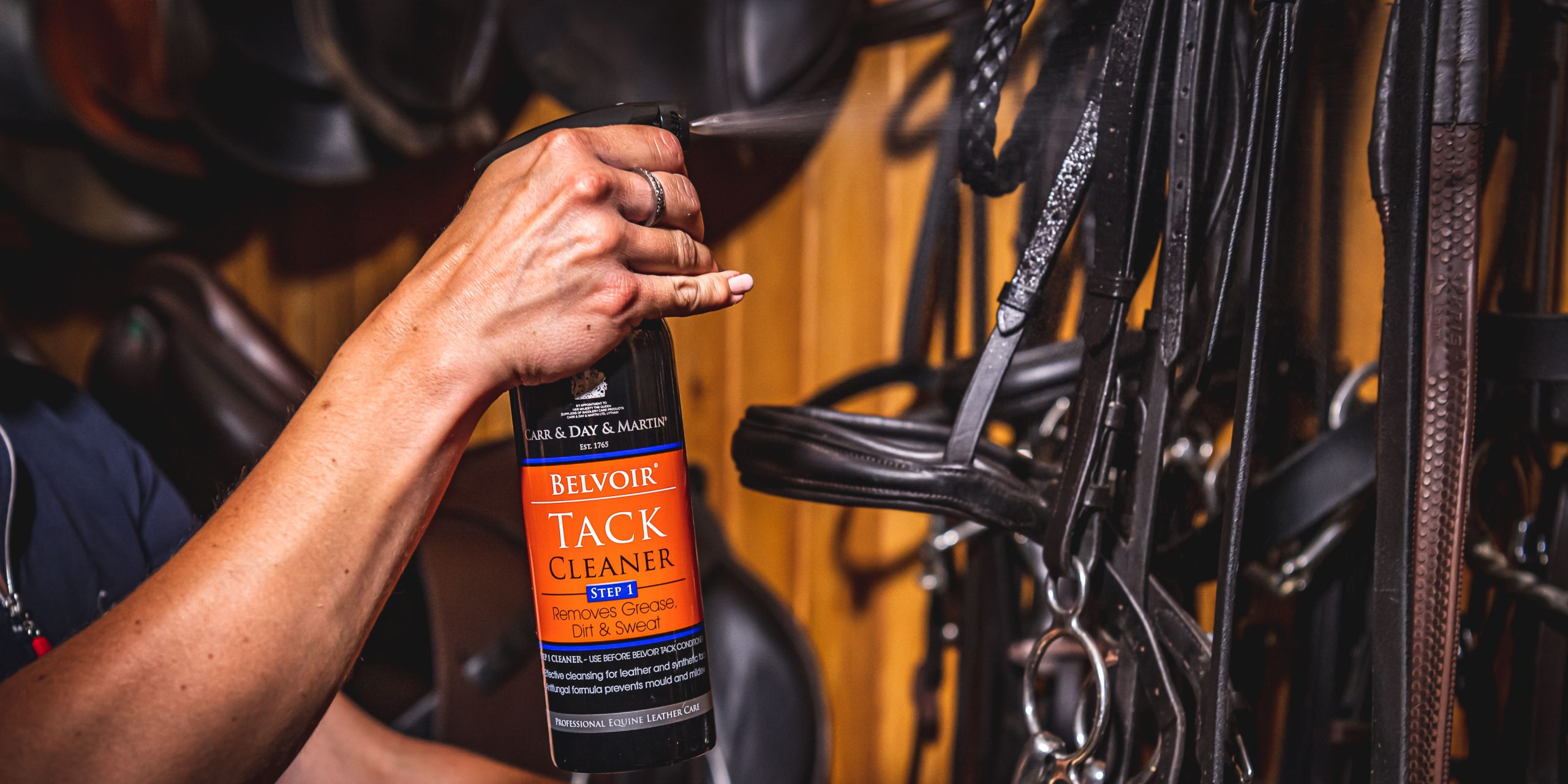
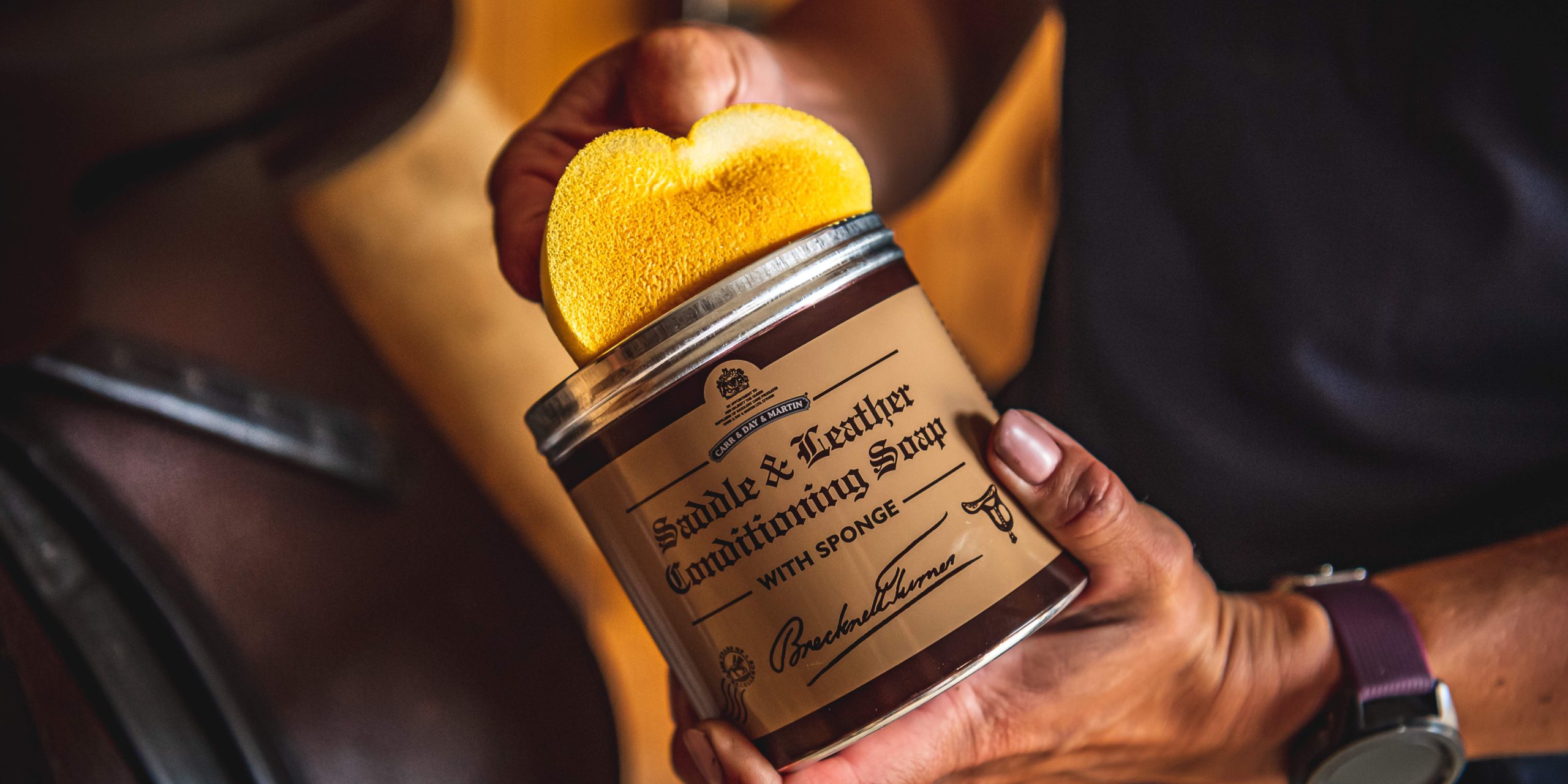
Option-B
Brecknell Turner Conditioning Saddle Soap is a soft blended soap with a slightly thicker application. It does not contain the protective properties of glycerine which produces a glossy finish, but gives a highly desirable matt finish ideal for the show ring, also includes sponge.
Option-C
Belvoir Leather Balsam contains lanolin and beeswax to feed and condition leather. The soft wax formula lightly oils the leather, keeping it supple. It is most effective when used in between the use of replenishing oils and is ideal for new leather and finer items. As with oils, take care not to over apply, also includes sponge.
It is always wise to check the compatibility of products on a small area before full use.
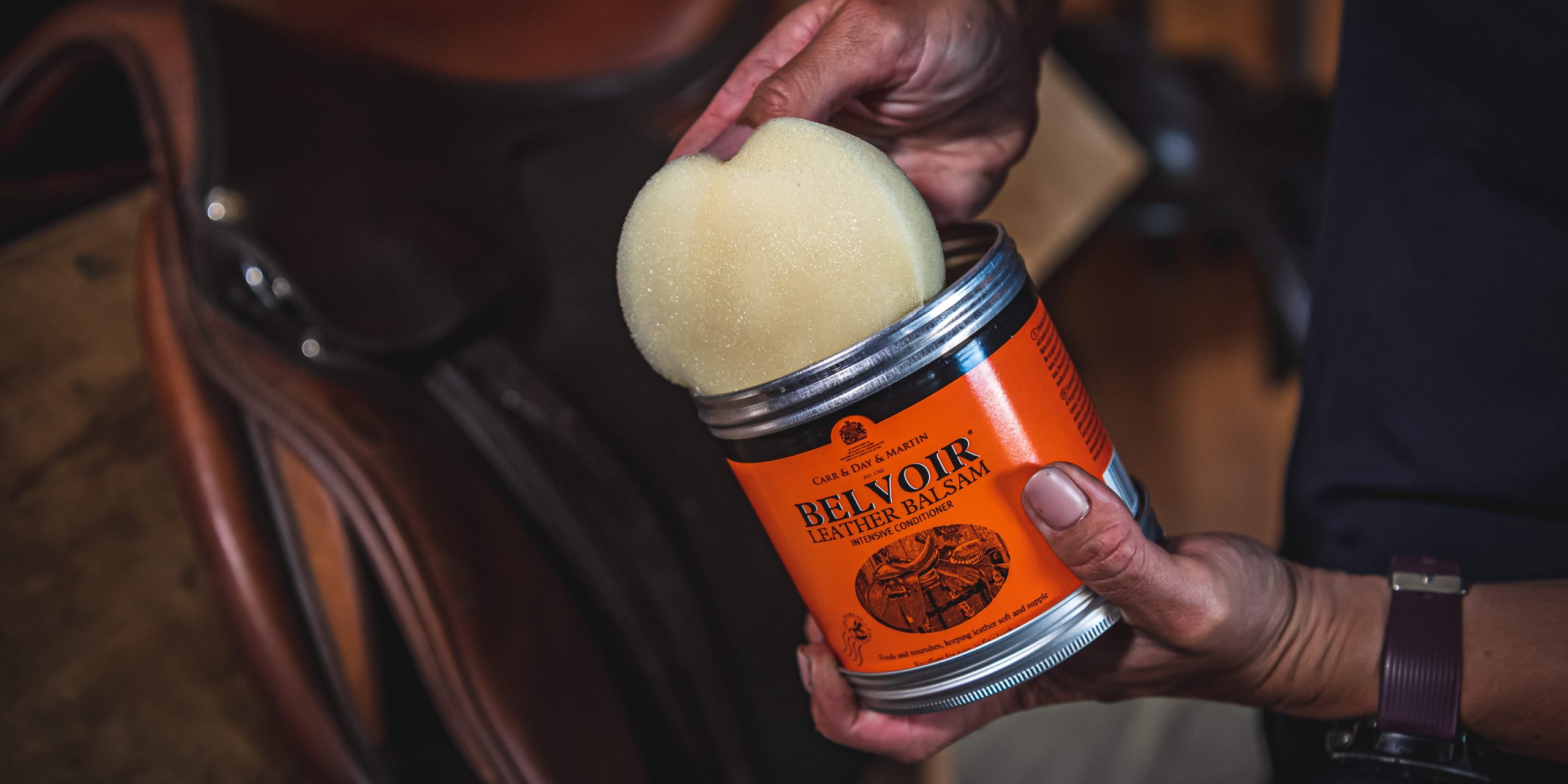
New Leather
A new saddle or bridle is an investment, so it’s important to look after them from day one. New leather items often feel stiff and will usually benefit from light oiling before use.
NEATSFOOT COMPOUND
As a general guide, a thin layer of Neatsfoot Compound should be applied to the grain and two thin layers to the underside or flesh.
Repeat the process whenever the leather feels dry or stiff.
Take care to oil stirrup leathers only very lightly as supple leathers will stretch much more easily.
Some items now come pre-oiled and ready to use, while others have a protective layer which is easily removed by cleaning and then treating as above.
Once it has been in use for a short period of time, new leather will soften and ‘give’, so minor fitting adjustments may then be required.
It is always important to first check the type of leather used on your saddle or bridle and how the leather has been finished before starting any type of treatment.
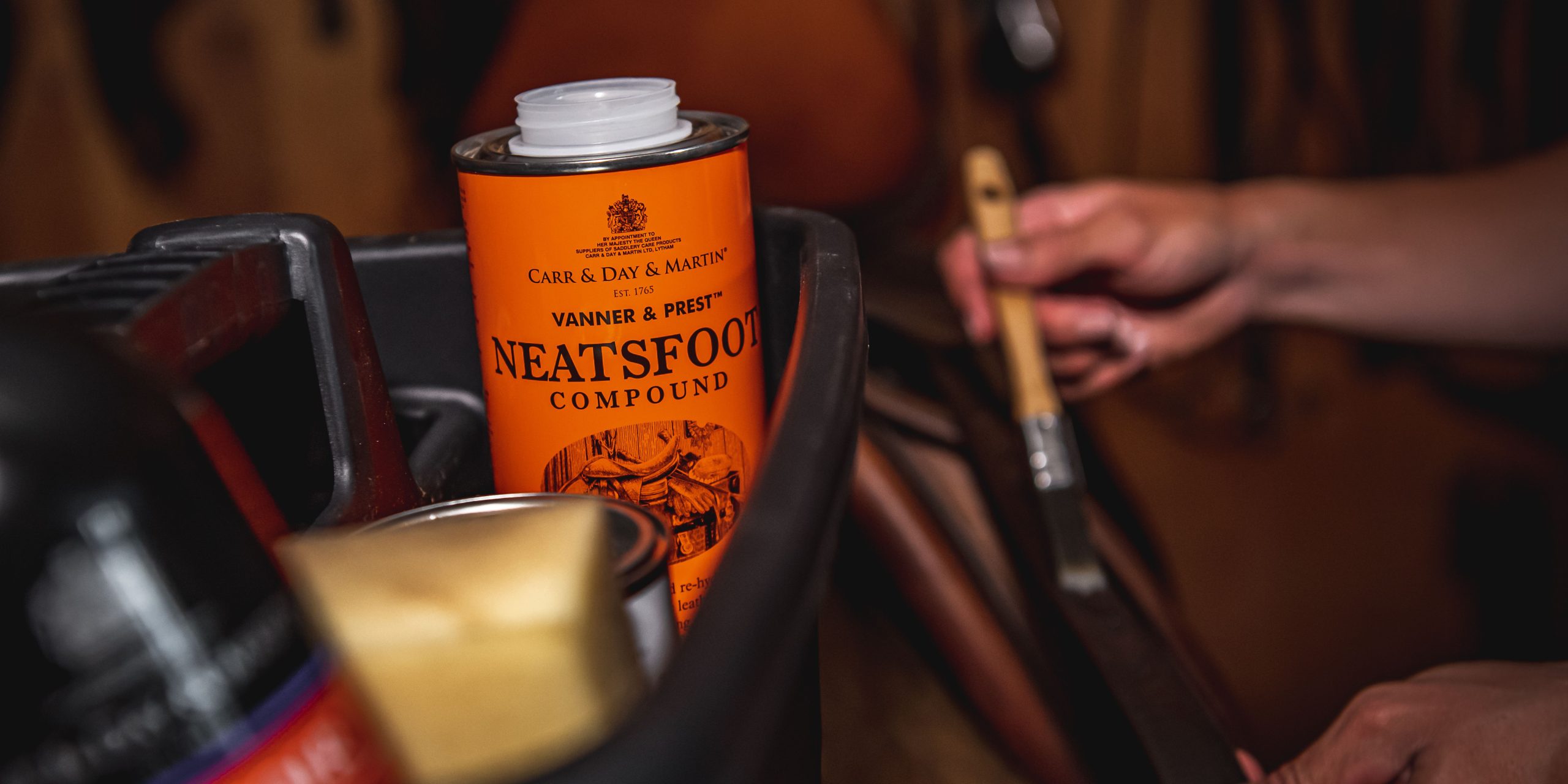
Caring for Saturated Leather
Prevention is better than a cure!
If possible, try to avoid getting your tack wet as this can cause severe damage to the delicate fibre sub-structure. If your saddle or bridle do become soaked, caring for them correctly can minimise potential damage.
When leather becomes waterlogged, the inner fibre becomes stretched to accommodate the absorbed water. In this state, the leather is then weakened as the fibres are distorted from their normal strong organisation.
As the leather dries, the conditioning oils evaporate with the moisture, leaving the fibres with little or no lubrication. They then stick together in clumps leaving the leather feeling stiff and dry. It is essential to lightly condition the leather whilst it is still wet, thus permeable and responsive.
Always wipe off dirt and mud carefully, before it has had the chance to dry. Belvoir Leather Balsam or a very sparing application of Neatsfoot Compound is then recommended.
It is essential to dry all wet leather items as naturally as possible away from direct heat such as radiators, heaters or fires. If not, the accelerated drying process causes the rapid removal of moisture and conditioning oils.
If these steps are followed, your tack should not become stiff, dry or watermarked.
Whenever possible try to prevent your tack getting wet in the first place by investing in a waterproof saddle cover. Also, be careful in the rain, as the colour from waterproof jackets or chaps could run onto your saddle, and leather is more easily stained when saturated.
Revitalising Dry & Cracked Leather
Leather contains moisturising and lubricating oils which were added in the tanning process. These oils are gradually lost as the leather is used. The once plump and flexible fibres of leather gradually become thinner and more rigid.
Instead of flexing and stretching, the fibres become tight and stiff. In a similar fashion to bending a piece of metal repeatedly, they will eventually weaken and break, causing cracks.
NEATSFOOT COMPOUND
Using an oil such as Neatsfoot Compound will revitalise the fibres in the leather so that they can move freely again, much like oiling an engine.
As a guide, apply one or two thin layers to the absorbent flesh side of the leather. The leather will become strong again, less brittle and less likely to snap.
CARRS LEATHER OIL
For excessively dry leather or leather in need of revival, an intensive conditioning oil such as Carrs Leather Oil is more appropriate.
Apply a thin coating to the flesh side of the leather and allow to soak in for at least 24 hours. Particularly dry tack may benefit from a thin, additional coating applied to the grain side, which will also help to restore the colour.
If the leather still appears dry another application may be required, however take care not to over oil, wiping off any excess as it cannot be removed once absorbed.
Over oiling ‘collapses’ the structure of leather, leaving a slick, oily feel. So little and often is more effective than a thick application.
Although cracks cannot be repaired, their appearance can be minimised by oiling and conditioning.

Treating Mould and Mildew
Mould and mildew thrive in warm, dark, damp conditions. They penetrate deep into the fibre of the leather which can weaken them and cause permanent damage. Be aware that if leather is poorly stored mould and mildew can grow very quickly.
Any such mouldy leather should be immediately removed from the tack room to prevent the spread of spores to other saddlery items. Wipe away the mould and mildew with a Belvoir Tack Cleaner Mitt taking care to dispose after use to prevent further contamination.
Then clean with Belvoir Tack Cleaner Spray to help prevent the regrowth of mould and mildew. Use an old toothbrush to clean stitching and awkward places, and condition as normal. If a saddle has been badly affected by mould and mildew, some staining or mottling may remain. Whilst this cannot be removed, it may with correct care fade over time.
Mould and mildew penetrate leather to its core and so are impossible to remove entirely. However, spores will remain dormant if the correct preventative measures are taken.
Try to keep your tack room dry and light, perhaps using some low level storage heating, or a dehumidifier and wipe your tack everyday after use with Belvoir Tack Cleaner Mitt.
It is also important to remove any damp saddle cloths, numnahs and girths, as they should be left to dry away from tack.
Storage
To maintain leather integrity, optional storage conditions are essential.
The tack room should be dry and a consistent room temperature with good ventilation is ideal. High temperatures will cause protective oils and moisture to be drawn out of the leather. It is also important to protect leather from direct sunlight and fluorescent light, as this can cause premature ageing and fading.
Tack should ideally be stored off the ground, and saddles should be placed on saddle racks to preserve their shape.
Using a saddle cover protects it from dust, debris and accidental scratches. However, do not use plastic or waterproof covers as they can encourage the ‘moist’ conditions which attract mould. A breathable saddle cover is preferable and cotton is ideal.
If tack is not going to be used for some time, it should be carefully stored to preserve its condition. Leather straps are best stored flat so bridles and leathers should be taken to pieces and stored unbuckled.
The leather should be thoroughly cleaned first but not conditioned.
When completely dry, a protective barrier of KO-CHO-LINE should be applied, on both sides of the leather. This will protect from moisture, heat and mould. Buckles should also be coated to help prevent rust.
Once KO-CHO-LINE has been applied, items should be wrapped in cotton fabric, such as an old pillowcase, and stored in the tack room or other suitable area.
Items in storage should be periodically checked to ensure they are still in good condition.
When the item is required for use again, thoroughly remove the protective grease with a cloth, then clean and condition as normal.
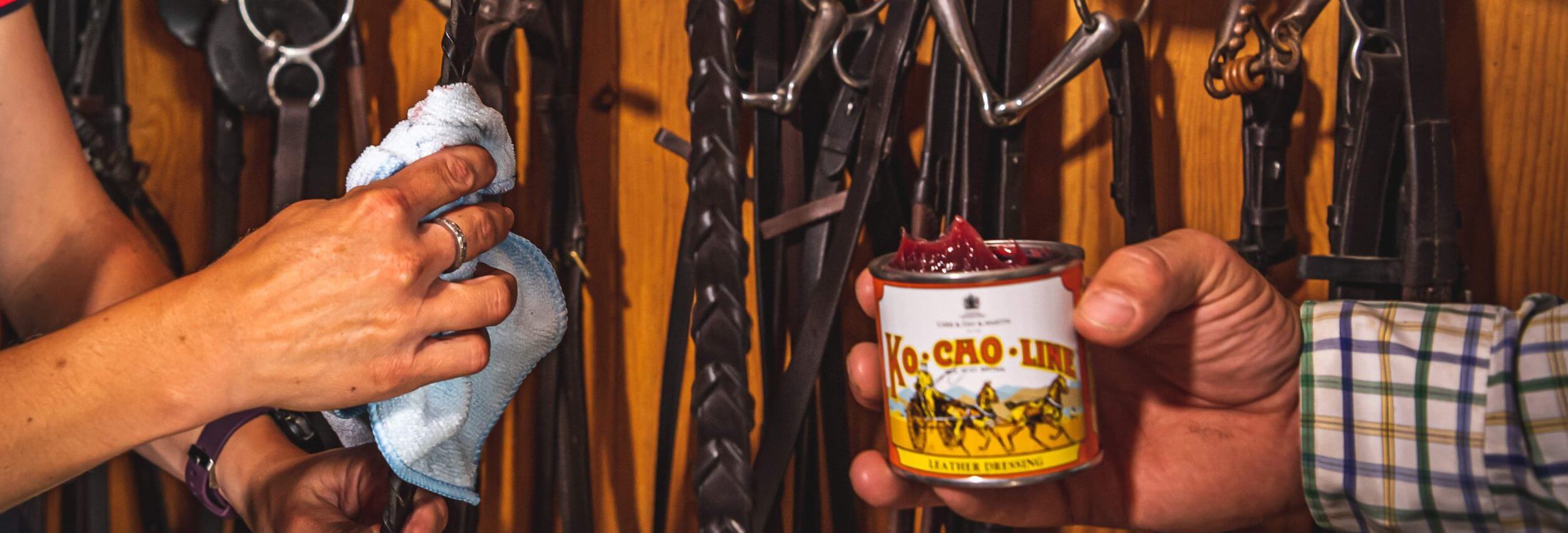
Keep it simple
So, now you know all you need to know about caring for leather – we hope we’ve made it easy to understand? If you’re still unsure or concerned, either call or email us.
There are 7 key things to remember:
- If possible, first find out what type of leather your tack is.
- Always follow manufacturers’ guidelines; look closely at your guarantee.
- When revitalising dry and cracked leather, apply oil sparingly. Wait, then repeat. Over oiling will cause irreparable damage.
- Storage conditions need careful consideration to avoid mould and mildew.
- Don’t dry saturated leather next to direct heat source. Clean and condition while wet, then leave to dry naturally.
- Be disciplined! Clean your tack after every ride to remove grease and sweat. This will prevent build up and make your weekly tack cleaning a much easier job.
- Take your tack to pieces and thoroughly clean it at least every five times it is used. This will ensure all dirt and grease is removed from awkward areas. Apply a conditioner to protect the leather and keep it soft and supple.
Saddles and bridles represent a big investment and are an essential piece of kit. Look after them and they will keep their value and last for years.
Caring for your tack doesn’t have to be time consuming, we’ve made it quick and easy with our Cleaner and Conditioner; is there any excuse for dirty tack?
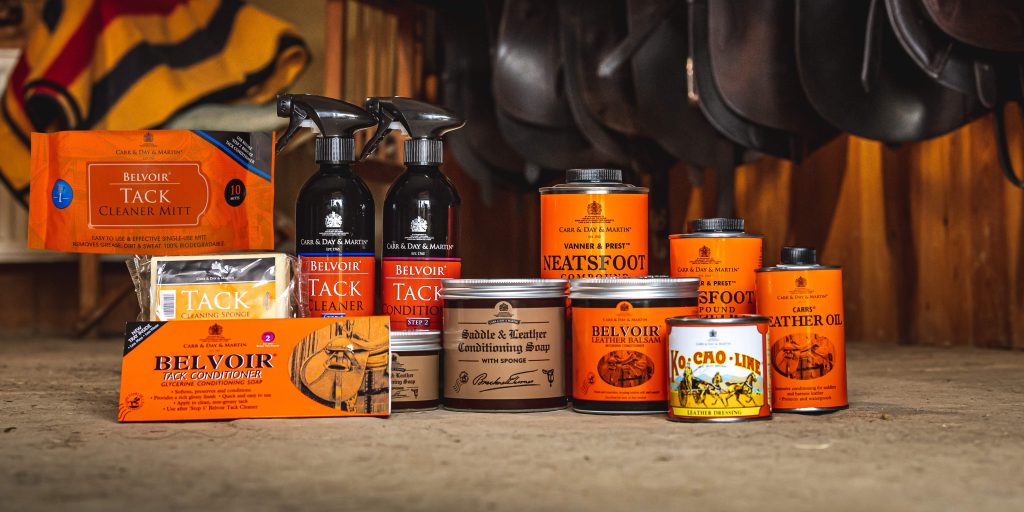
View our full Leather Care range

